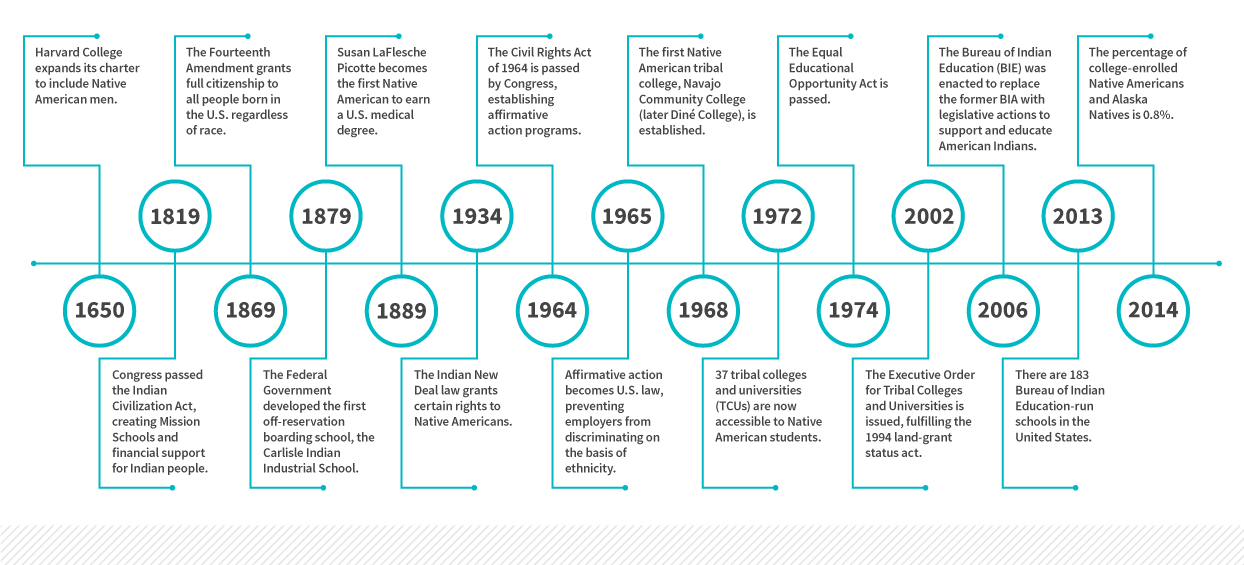Last updated: October 11, 2022
For centuries, the United States Government has been working towards creating equal opportunities for Native Americans. With education in particular, government agencies have been navigating just how much support to provide citizens whose family tree spans generations in North America, while still allowing them to uphold their own individual rights and traditions.
The Bureau of Indian Education (BIE) exists today as a testament to this work. Today there are 183 Indian-education run schools in the U.S., providing educational opportunities for native people with the mission of providing educational opportunities that allow economic and cultural well-being for Indian tribes and Alaska Native villages.
While the BIE does create fantastic opportunities for students who wish to advance their education in accordance with this mission, endless educational opportunities exist for native people to receive support towards the pursuit of higher education in a non-traditional setting. Use our interactive guide below to sort through resources and over 60 Native American scholarships available to students.
How to Pay | Application Prep | Native American Scholarships | All Scholarships
Educational Milestones for Native Americans

“1.5 percent of the U.S. population, around 4.5 million individuals, self-identifies as American Indian or Alaska Native descent. Of these, an estimated 1.9 million are eligible for federal services.”
— U.S. Census Bureau
Federal aid is only one of the many ways to receive support towards your pursuit of a degree. Privately funded scholarships offer a substantial opportunity to receive need-based support that honors your native descent. But financial support is not the only resource available for Native American students. The American Indian College Fund and other organizations also provide support in the form of professional development, academic support, and curated toolkits aimed to set you up for success.
Resources for Native American Students
Trace Indian Ancestry
The nation’s largest minority education organization provides scholarship opportunities by raising money to support students of color to attend, thrive and graduate from college to become better leaders of their communities.
Federal Student Aid
The U.S. Department of Education provides information and tips for how to qualify for aid and prepare for college.
Native Scholars 101
From the American Indian College Fund, Student Success Services curated this toolkit filled with free resources for Native scholars.
Professional Development
The American Indian College Fund offers professional development tips from resume building, interviewing tips, and professional etiquette.
How to Pay for College
Scholarships
There are hundreds of scholarships for Native American students, which are awarded by local organizations, private companies, societies and more.
Grants
Grants don’t need to be paid back and are based on your financial circumstances. They are usually funded by the federal government, your state or college.
Fellowships
While scholarships usually fund tuition, fellowships typically cover graduate study, research projects and abroad experiences without needing to be paid back.
Student Loans
You can borrow money from the government or a bank, but it needs to be paid back with interest. The federal government offers many loan options—fill out the free application for Federal Student Aid (FAFSA) to see if you qualify for financial aid. If you need help, use our interactive guide to learn how to answer every question.
Federal Work-Study Program
Provides part-time jobs for undergraduate and graduate students with financial need, allowing them to earn money to pay education expenses.
If you’re just beginning the process of finding suitable scholarships, make sure you’re prepared for the application process by starting a folder with the assets below.